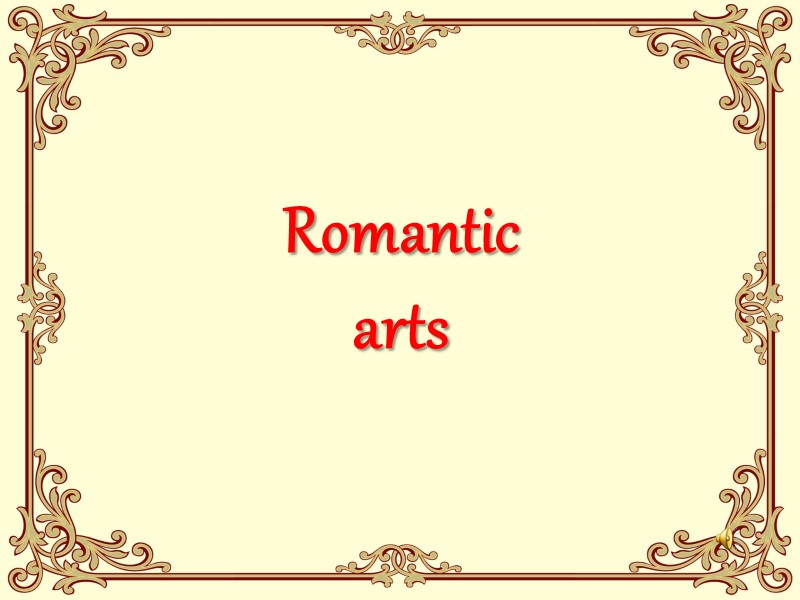 Romantic arts
Romantic arts
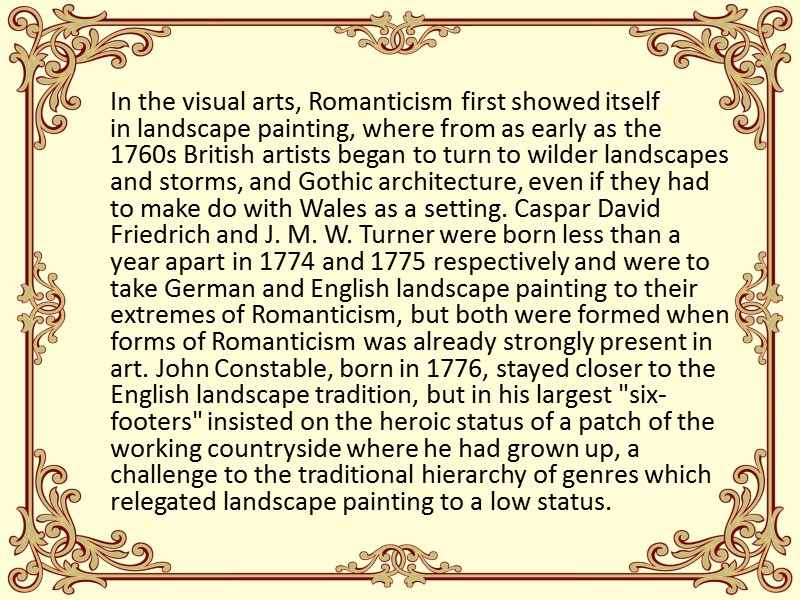 In the visual arts, Romanticism first showed itself in landscape painting, where from as early as the 1760s British artists began to turn to wilder landscapes and storms, and Gothic architecture, even if they had to make do with Wales as a setting. Caspar David Friedrich and J. M. W. Turner were born less than a year apart in 1774 and 1775 respectively and were to take German and English landscape painting to their extremes of Romanticism, but both were formed when forms of Romanticism was already strongly present in art. John Constable, born in 1776, stayed closer to the English landscape tradition, but in his largest "six-footers" insisted on the heroic status of a patch of the working countryside where he had grown up, a challenge to the traditional hierarchy of genres which relegated landscape painting to a low status.
In the visual arts, Romanticism first showed itself in landscape painting, where from as early as the 1760s British artists began to turn to wilder landscapes and storms, and Gothic architecture, even if they had to make do with Wales as a setting. Caspar David Friedrich and J. M. W. Turner were born less than a year apart in 1774 and 1775 respectively and were to take German and English landscape painting to their extremes of Romanticism, but both were formed when forms of Romanticism was already strongly present in art. John Constable, born in 1776, stayed closer to the English landscape tradition, but in his largest "six-footers" insisted on the heroic status of a patch of the working countryside where he had grown up, a challenge to the traditional hierarchy of genres which relegated landscape painting to a low status.
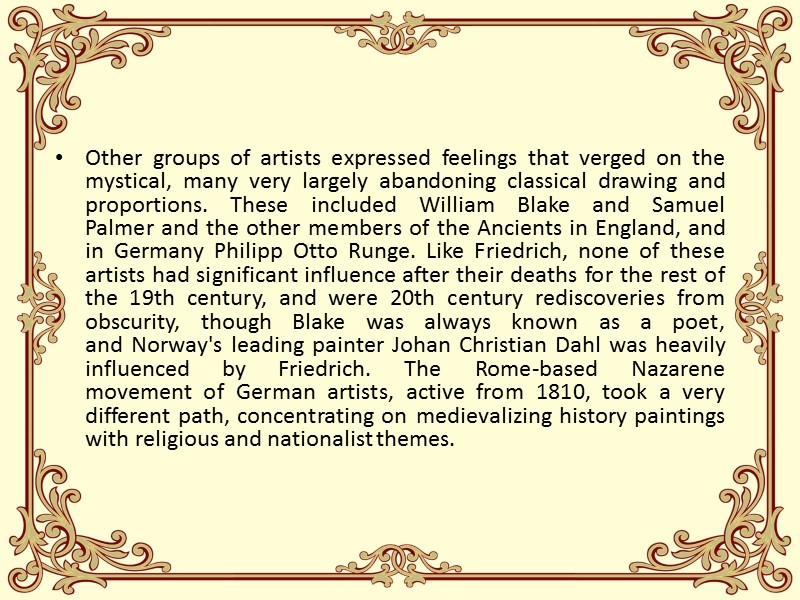 Other groups of artists expressed feelings that verged on the mystical, many very largely abandoning classical drawing and proportions. These included William Blake and Samuel Palmer and the other members of the Ancients in England, and in Germany Philipp Otto Runge. Like Friedrich, none of these artists had significant influence after their deaths for the rest of the 19th century, and were 20th century rediscoveries from obscurity, though Blake was always known as a poet, and Norway's leading painter Johan Christian Dahl was heavily influenced by Friedrich. The Rome-based Nazarene movement of German artists, active from 1810, took a very different path, concentrating on medievalizing history paintings with religious and nationalist themes.
Other groups of artists expressed feelings that verged on the mystical, many very largely abandoning classical drawing and proportions. These included William Blake and Samuel Palmer and the other members of the Ancients in England, and in Germany Philipp Otto Runge. Like Friedrich, none of these artists had significant influence after their deaths for the rest of the 19th century, and were 20th century rediscoveries from obscurity, though Blake was always known as a poet, and Norway's leading painter Johan Christian Dahl was heavily influenced by Friedrich. The Rome-based Nazarene movement of German artists, active from 1810, took a very different path, concentrating on medievalizing history paintings with religious and nationalist themes.
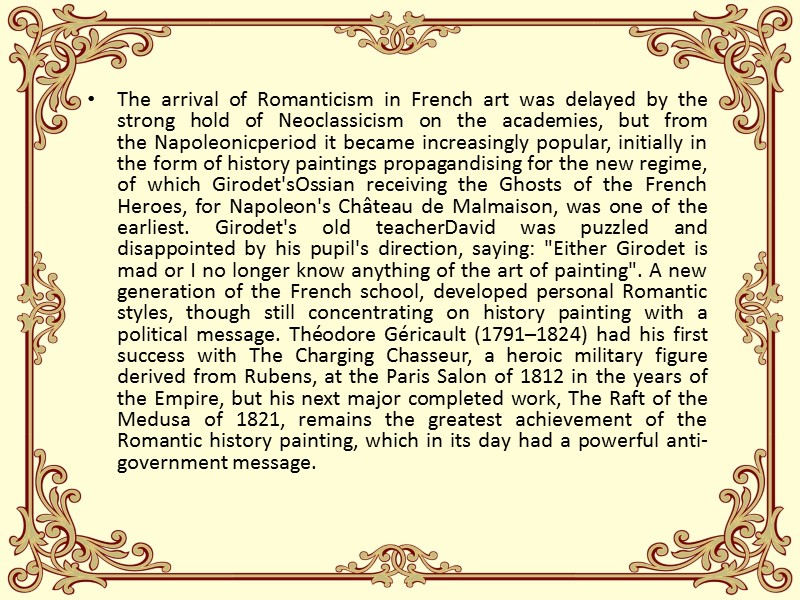 The arrival of Romanticism in French art was delayed by the strong hold of Neoclassicism on the academies, but from the Napoleonicperiod it became increasingly popular, initially in the form of history paintings propagandising for the new regime, of which Girodet'sOssian receiving the Ghosts of the French Heroes, for Napoleon's Château de Malmaison, was one of the earliest. Girodet's old teacherDavid was puzzled and disappointed by his pupil's direction, saying: "Either Girodet is mad or I no longer know anything of the art of painting". A new generation of the French school, developed personal Romantic styles, though still concentrating on history painting with a political message. Théodore Géricault (1791–1824) had his first success with The Charging Chasseur, a heroic military figure derived from Rubens, at the Paris Salon of 1812 in the years of the Empire, but his next major completed work, The Raft of the Medusa of 1821, remains the greatest achievement of the Romantic history painting, which in its day had a powerful anti-government message.
The arrival of Romanticism in French art was delayed by the strong hold of Neoclassicism on the academies, but from the Napoleonicperiod it became increasingly popular, initially in the form of history paintings propagandising for the new regime, of which Girodet'sOssian receiving the Ghosts of the French Heroes, for Napoleon's Château de Malmaison, was one of the earliest. Girodet's old teacherDavid was puzzled and disappointed by his pupil's direction, saying: "Either Girodet is mad or I no longer know anything of the art of painting". A new generation of the French school, developed personal Romantic styles, though still concentrating on history painting with a political message. Théodore Géricault (1791–1824) had his first success with The Charging Chasseur, a heroic military figure derived from Rubens, at the Paris Salon of 1812 in the years of the Empire, but his next major completed work, The Raft of the Medusa of 1821, remains the greatest achievement of the Romantic history painting, which in its day had a powerful anti-government message.

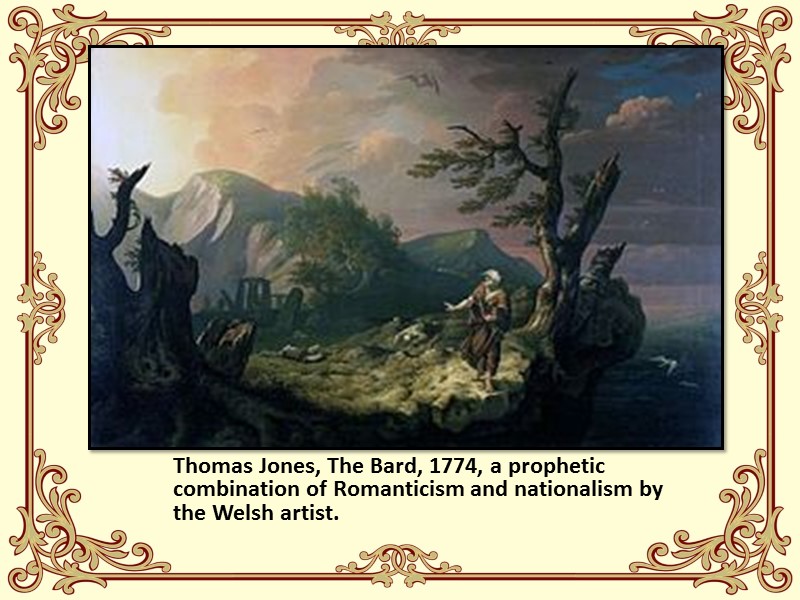 Thomas Jones, The Bard, 1774, a prophetic combination of Romanticism and nationalism by the Welsh artist.
Thomas Jones, The Bard, 1774, a prophetic combination of Romanticism and nationalism by the Welsh artist.
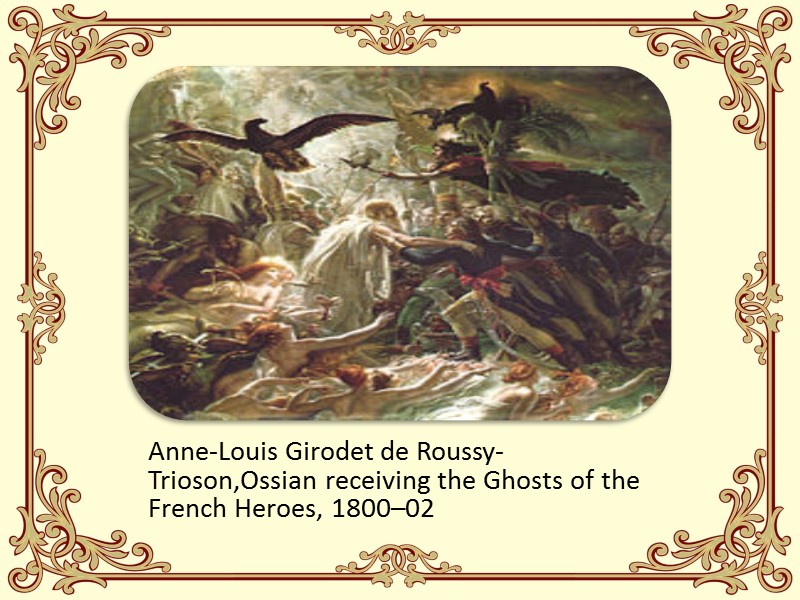 Anne-Louis Girodet de Roussy-Trioson,Ossian receiving the Ghosts of the French Heroes, 1800–02
Anne-Louis Girodet de Roussy-Trioson,Ossian receiving the Ghosts of the French Heroes, 1800–02
 Francisco Goya, The Third of May 1808, 1814
Francisco Goya, The Third of May 1808, 1814
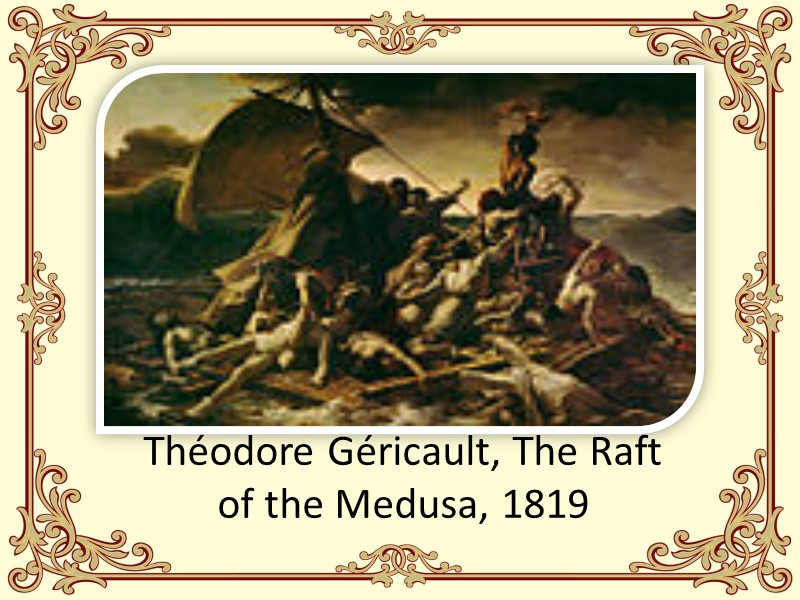 Théodore Géricault, The Raft of the Medusa, 1819
Théodore Géricault, The Raft of the Medusa, 1819
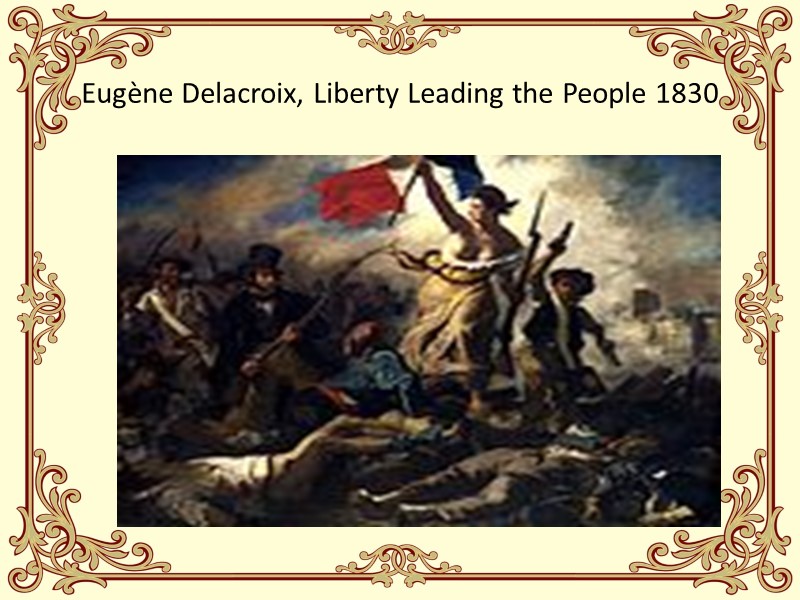 Eugène Delacroix, Liberty Leading the People 1830
Eugène Delacroix, Liberty Leading the People 1830
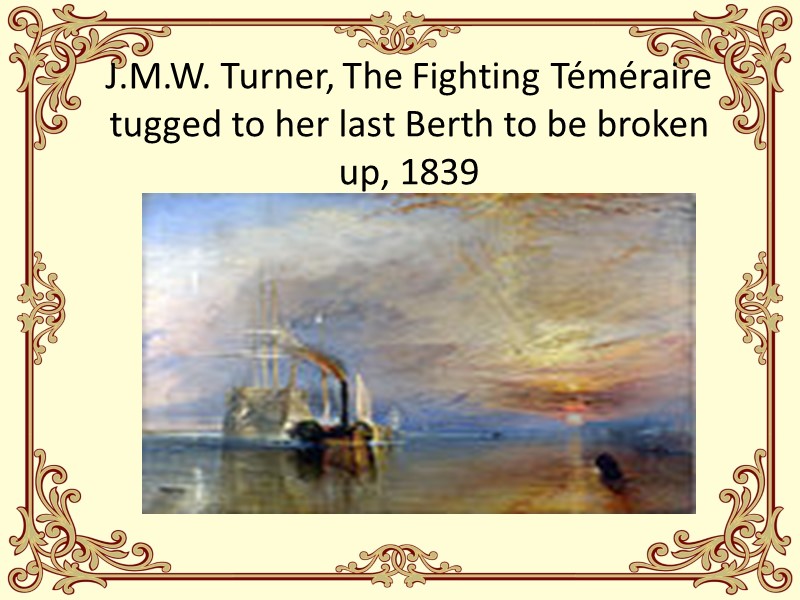 J.M.W. Turner, The Fighting Téméraire tugged to her last Berth to be broken up, 1839
J.M.W. Turner, The Fighting Téméraire tugged to her last Berth to be broken up, 1839
 Thanks for your attention
Thanks for your attention























